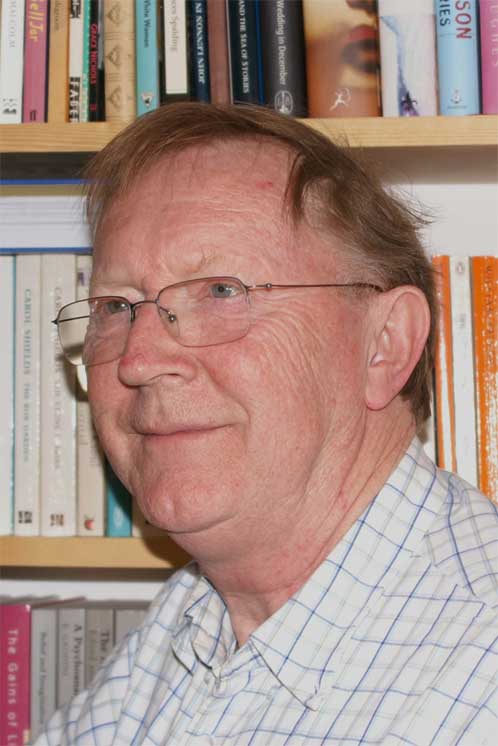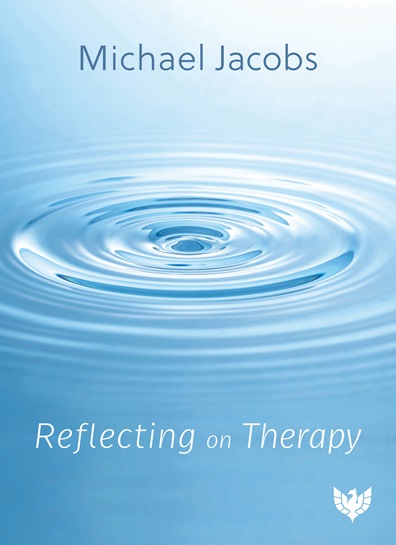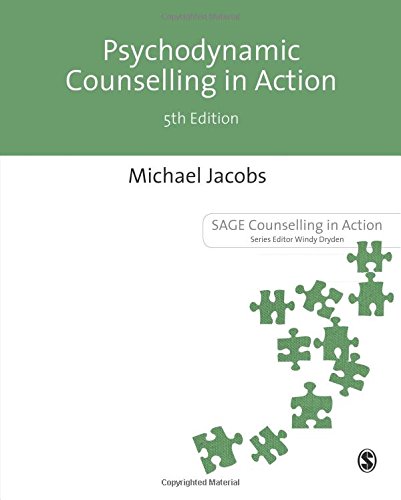Shakespeare on the Couch
Are Shakespeare's characters real? If that seems an odd question to ask, it was certainly one which vexed critics at the turn of the 20th century, when some opinion scorned both characters and situations in Shakespeare as only being constructed for dramatic effect, to titillate the groundlings and the young nobles.
There were several responses to such arguments, one being a slim volume that came into my possession when I was collecting first editions of the writer/academic J. I. M. Stewart, who also wrote detective stories under the pen-name Michael Innes. My collection is a story in itself, but sufficient to include here is that Stewart, along with his friend Auden, were fascinated by Freudian ideas, and in his detective novels as well as in a book called Character and Motive in Shakespeare Stewart drew upon some of Freud's ideas. He also gave the first Ernest Jones Memorial Lecture, which was subsequently lost, and corresponded with Jones on Oedipus and Hamlet. In his book on Shakespeare's characters, he draws upon Freud for various explanations for jealousy and delusional jealousy, against the criticism of the unreality of the almost insane jealousy shown by Leontes within 1200 lines of the start of The Winter's Tale. The repressed homosexual feelings in Leontes for his old boyhood friend certainly make some sense.
The debate may have been an old one - Stewart's book was published in 1949 - but it has been enlivened by the publication in 1998 of Harold Bloom's large volume Shakespeare - the Invention of the Human. Bloom is no friend of Freud's, and is mostly critical in places of Freud's interpretations of Shakespeare's characters, but some of Bloom's discussions bear some similarity to Stewart's ideas, although Bloom gives no sign that he knew the earlier text. Bloom believes that Shakespeare discovered what it is to be human way before Freud. And what is particularly interesting is that the characters whom Stewart discusses are very largely given a prominent place in Bloom's volume.
Put these two texts together, and the argument for the reality of Shakespeare's characters begins to clarify. Naturally these characters have been analysed too by a good number of analytic writers, starting of course with Freud's linking of Hamlet and Oedipus in his famous letter to Fliess. Lists of published articles on Shakespeare's plays total more than 700 articles or books. Here then is a mine of speculation - and it can be no more than that - which sometimes in my view mistakenly strays into analysing Shakespeare himself, but which more often uses his characters as illustrative material, paralleled sometimes in case studies, or as subjects of literary psychoanalysis. If some provide far-fetched explanations, serving more to boost psychoanalytic theory, other authors provide interesting insights into characters who are mirrored in what Stewart calls 'a rather expensive kind of consulting room'.
Yet psychoanalytic interpretations do not always lead to simple explanations or parallels. Leontes' jealousy can be explained, but Othello's is harder to see as having a similar explanation. Stewart in this case puts forward a different argument - that Iago and Othello represent two parts of the same person, and this is indeed supported in those productions where the actors playing the two roles swap roles in alternate performances. So, while my book supports some situations as genuinely believable - for instance Lear's madness, the changing relationship between Prince Hal and Falstaff, Antony and Cleopatra's frustrated search for completeness in each other - others permit alternative approaches. Like Othello and Iago, Prospero and Caliban perhaps represent two parts of the same person; or the test of the three caskets in The Merchant of Venice may suggest that the theme of death deserves more attention - as Freud tried to give it in his fascinating essay on the subject. And might the Macbeths give us some insight into folie ˆ deux?
These are all interesting questions, to which psychoanalytic writing provides a multitude of explanations. Other theories add to this - for example Murray's book on Shakespeare's Imagined Persons, which takes a behavioural stance. But the actors themselves of course make these characters come alive. My book comes out of teaching a course on Shakespeare on the Couch, when I was able to use extracts from the many productions now on DVD. It is fascinating, for example, to compare Greenaway's and Jarman's takes on The Tempest. The former is opulent, the latter dwells on the seediness of the setting. In the former Caliban is represented by a beautiful male dancer, sinuous as a snake in his movements; in the latter by an ugly obscene figure. In Greenaway's production Prospero speaks all the lines of the characters until the reconciliation scene. All this adds greatly to possible interpretations of the characters and the situations. Furthermore, on DVD there are often extra features, such as the interviews with Antony Sher about his preparations for his roles on DVDs of The Winter's Tale and of Macbeth.
This was all valuable material in teaching, which it was not possible to use in a printed text, and the production of an accompanying DVD would have been prohibitively expensive. However, in the text I have tried to convey something of the way these scenes are acted, and I have included extracts from the interviews as well. All this makes Shakespeare come alive - illustrating just how real it is possible for many of his characters to become through the interpretation of actor and analyst alike.
My book therefore takes characters from eight of Shakespeare's plays, and discusses these different interpretations. The reader will perhaps wonder why the most enigmatic of all - Hamlet - does not deserve a chapter. The reason, as I explain in the epilogue, is that Hamlet (and Ophelia and Gertrude) were in fact examined in another course, since the writing on Hamlet is so immense that he and the other characters in that play needed all those sessions to themselves. Besides, everyone knows about Hamlet - it is perhaps fitting to give some of the others their own limelight. They provide much to ponder on, not least in thinking about ourselves.
There were several responses to such arguments, one being a slim volume that came into my possession when I was collecting first editions of the writer/academic J. I. M. Stewart, who also wrote detective stories under the pen-name Michael Innes. My collection is a story in itself, but sufficient to include here is that Stewart, along with his friend Auden, were fascinated by Freudian ideas, and in his detective novels as well as in a book called Character and Motive in Shakespeare Stewart drew upon some of Freud's ideas. He also gave the first Ernest Jones Memorial Lecture, which was subsequently lost, and corresponded with Jones on Oedipus and Hamlet. In his book on Shakespeare's characters, he draws upon Freud for various explanations for jealousy and delusional jealousy, against the criticism of the unreality of the almost insane jealousy shown by Leontes within 1200 lines of the start of The Winter's Tale. The repressed homosexual feelings in Leontes for his old boyhood friend certainly make some sense.
The debate may have been an old one - Stewart's book was published in 1949 - but it has been enlivened by the publication in 1998 of Harold Bloom's large volume Shakespeare - the Invention of the Human. Bloom is no friend of Freud's, and is mostly critical in places of Freud's interpretations of Shakespeare's characters, but some of Bloom's discussions bear some similarity to Stewart's ideas, although Bloom gives no sign that he knew the earlier text. Bloom believes that Shakespeare discovered what it is to be human way before Freud. And what is particularly interesting is that the characters whom Stewart discusses are very largely given a prominent place in Bloom's volume.
Put these two texts together, and the argument for the reality of Shakespeare's characters begins to clarify. Naturally these characters have been analysed too by a good number of analytic writers, starting of course with Freud's linking of Hamlet and Oedipus in his famous letter to Fliess. Lists of published articles on Shakespeare's plays total more than 700 articles or books. Here then is a mine of speculation - and it can be no more than that - which sometimes in my view mistakenly strays into analysing Shakespeare himself, but which more often uses his characters as illustrative material, paralleled sometimes in case studies, or as subjects of literary psychoanalysis. If some provide far-fetched explanations, serving more to boost psychoanalytic theory, other authors provide interesting insights into characters who are mirrored in what Stewart calls 'a rather expensive kind of consulting room'.
Yet psychoanalytic interpretations do not always lead to simple explanations or parallels. Leontes' jealousy can be explained, but Othello's is harder to see as having a similar explanation. Stewart in this case puts forward a different argument - that Iago and Othello represent two parts of the same person, and this is indeed supported in those productions where the actors playing the two roles swap roles in alternate performances. So, while my book supports some situations as genuinely believable - for instance Lear's madness, the changing relationship between Prince Hal and Falstaff, Antony and Cleopatra's frustrated search for completeness in each other - others permit alternative approaches. Like Othello and Iago, Prospero and Caliban perhaps represent two parts of the same person; or the test of the three caskets in The Merchant of Venice may suggest that the theme of death deserves more attention - as Freud tried to give it in his fascinating essay on the subject. And might the Macbeths give us some insight into folie ˆ deux?
These are all interesting questions, to which psychoanalytic writing provides a multitude of explanations. Other theories add to this - for example Murray's book on Shakespeare's Imagined Persons, which takes a behavioural stance. But the actors themselves of course make these characters come alive. My book comes out of teaching a course on Shakespeare on the Couch, when I was able to use extracts from the many productions now on DVD. It is fascinating, for example, to compare Greenaway's and Jarman's takes on The Tempest. The former is opulent, the latter dwells on the seediness of the setting. In the former Caliban is represented by a beautiful male dancer, sinuous as a snake in his movements; in the latter by an ugly obscene figure. In Greenaway's production Prospero speaks all the lines of the characters until the reconciliation scene. All this adds greatly to possible interpretations of the characters and the situations. Furthermore, on DVD there are often extra features, such as the interviews with Antony Sher about his preparations for his roles on DVDs of The Winter's Tale and of Macbeth.
This was all valuable material in teaching, which it was not possible to use in a printed text, and the production of an accompanying DVD would have been prohibitively expensive. However, in the text I have tried to convey something of the way these scenes are acted, and I have included extracts from the interviews as well. All this makes Shakespeare come alive - illustrating just how real it is possible for many of his characters to become through the interpretation of actor and analyst alike.
My book therefore takes characters from eight of Shakespeare's plays, and discusses these different interpretations. The reader will perhaps wonder why the most enigmatic of all - Hamlet - does not deserve a chapter. The reason, as I explain in the epilogue, is that Hamlet (and Ophelia and Gertrude) were in fact examined in another course, since the writing on Hamlet is so immense that he and the other characters in that play needed all those sessions to themselves. Besides, everyone knows about Hamlet - it is perhaps fitting to give some of the others their own limelight. They provide much to ponder on, not least in thinking about ourselves.
By Michael Jacobs

View more details for Michael Jacobs
Reflecting on Therapy
- Print + eBook
The Therapist's Use of Self
- Paperback
Sigmund Freud
- Paperback
D.W. Winnicott
- Paperback
Shakespeare on the Couch
- Paperback












